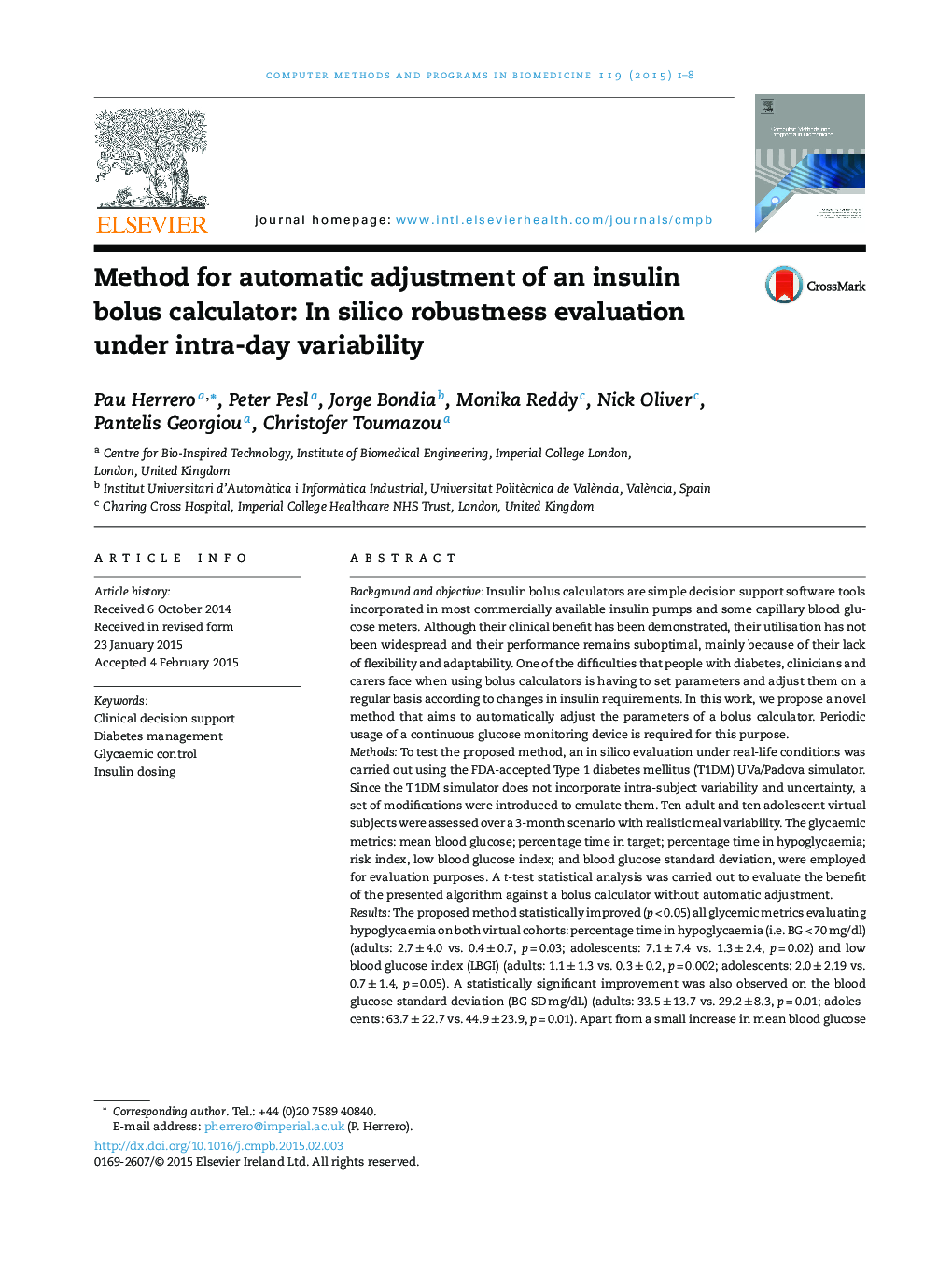| کد مقاله | کد نشریه | سال انتشار | مقاله انگلیسی | نسخه تمام متن |
|---|---|---|---|---|
| 469524 | 698324 | 2015 | 8 صفحه PDF | دانلود رایگان |
• A novel method that aims to automatically adjust the parameters of a bolus calculator is presented.
• A novel in silico evaluation under realistic intra-day variability was carried out.
• The proposed method has the potential to significantly improve glycemic control in diabetes.
Background and objectiveInsulin bolus calculators are simple decision support software tools incorporated in most commercially available insulin pumps and some capillary blood glucose meters. Although their clinical benefit has been demonstrated, their utilisation has not been widespread and their performance remains suboptimal, mainly because of their lack of flexibility and adaptability. One of the difficulties that people with diabetes, clinicians and carers face when using bolus calculators is having to set parameters and adjust them on a regular basis according to changes in insulin requirements. In this work, we propose a novel method that aims to automatically adjust the parameters of a bolus calculator. Periodic usage of a continuous glucose monitoring device is required for this purpose.MethodsTo test the proposed method, an in silico evaluation under real-life conditions was carried out using the FDA-accepted Type 1 diabetes mellitus (T1DM) UVa/Padova simulator. Since the T1DM simulator does not incorporate intra-subject variability and uncertainty, a set of modifications were introduced to emulate them. Ten adult and ten adolescent virtual subjects were assessed over a 3-month scenario with realistic meal variability. The glycaemic metrics: mean blood glucose; percentage time in target; percentage time in hypoglycaemia; risk index, low blood glucose index; and blood glucose standard deviation, were employed for evaluation purposes. A t-test statistical analysis was carried out to evaluate the benefit of the presented algorithm against a bolus calculator without automatic adjustment.ResultsThe proposed method statistically improved (p < 0.05) all glycemic metrics evaluating hypoglycaemia on both virtual cohorts: percentage time in hypoglycaemia (i.e. BG < 70 mg/dl) (adults: 2.7 ± 4.0 vs. 0.4 ± 0.7, p = 0.03; adolescents: 7.1 ± 7.4 vs. 1.3 ± 2.4, p = 0.02) and low blood glucose index (LBGI) (adults: 1.1 ± 1.3 vs. 0.3 ± 0.2, p = 0.002; adolescents: 2.0 ± 2.19 vs. 0.7 ± 1.4, p = 0.05). A statistically significant improvement was also observed on the blood glucose standard deviation (BG SD mg/dL) (adults: 33.5 ± 13.7 vs. 29.2 ± 8.3, p = 0.01; adolescents: 63.7 ± 22.7 vs. 44.9 ± 23.9, p = 0.01). Apart from a small increase in mean blood glucose on the adult cohort (129.9 ± 11.9 vs. 133.9 ± 11.6, p = 0.03), the rest of the evaluated metrics, despite showing an improvement trend, did not experience a statistically significant change.ConclusionsA novel method for automatically adjusting the parameters of a bolus calculator has the potential to improve glycemic control in T1DM diabetes management.
Journal: Computer Methods and Programs in Biomedicine - Volume 119, Issue 1, April 2015, Pages 1–8
